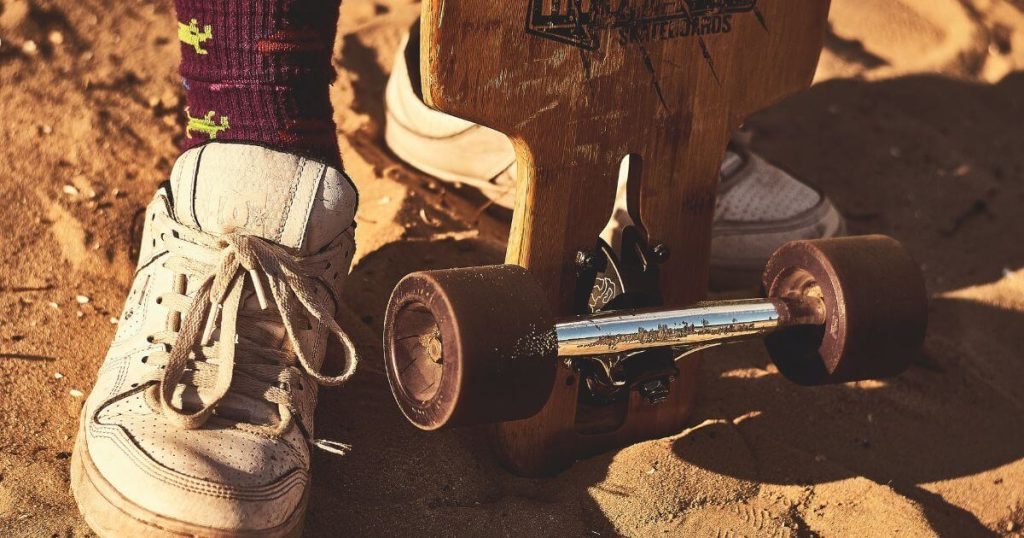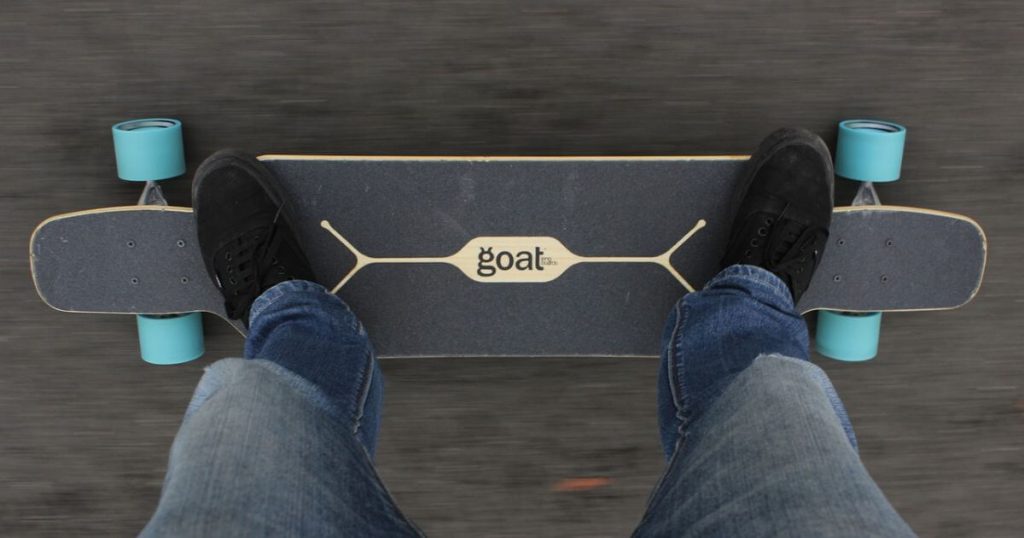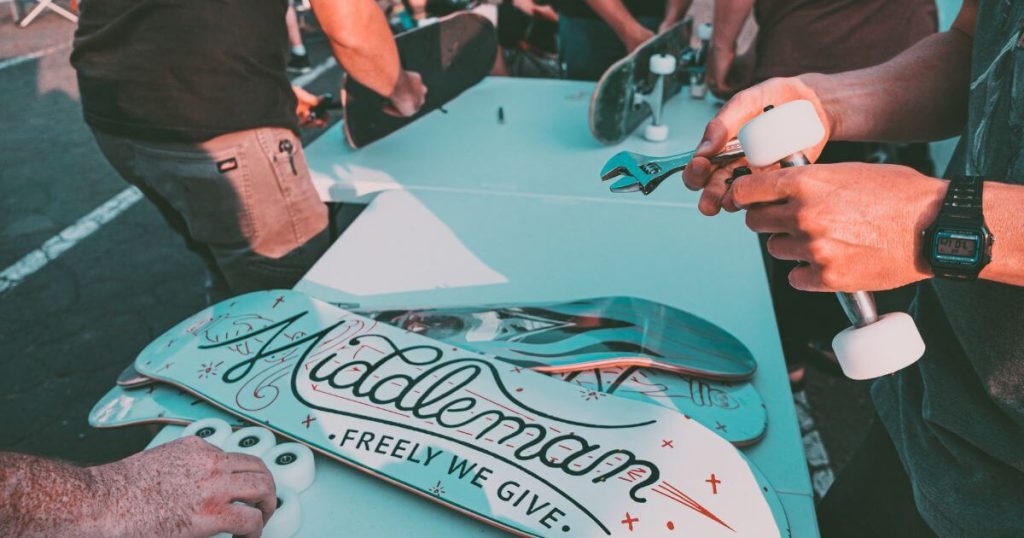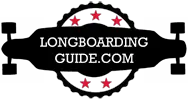As passionate riders, we know that our longboards are more than just a means of transportation – they’re an extension of our personalities and a way to express ourselves. In a sea of mass-produced, cookie-cutter boards, it’s easy to feel like just another rider in the crowd. But what if you could create something that’s truly yours, a one-of-a-kind ride that reflects your individuality and style? That’s why you should build a custom longboard!
By taking the time to handpick each component and putting your personal touch on the design, you can create a board that’s not only tailored to your riding preferences but also makes a statement about who you are. Plus, there’s just something special about knowing that your ride is one-of-a-kind, lovingly crafted by your own hands.
In this step-by-step guide, we’ll walk you through the process of building your dream ride from the ground up, using quality components from reputable brands like Loaded, Sector 9, and Landyachtz. We’ll also share tips and tricks to help you make the most of your custom creation, ensuring a truly unique and enjoyable longboarding experience.
So whether you’re a seasoned rider looking to up your game or a newbie searching for a truly personal introduction to the sport, building a custom longboard is an exciting and rewarding journey. Let’s dive in and start crafting your perfect ride!
Step 1: Choose Your Deck

First things first, you need to choose a deck that fits your riding style and preferences. This is arguably the most crucial decision you’ll make, as the deck will lay the foundation for your entire custom longboard experience. There are several factors to consider when selecting the perfect deck for you:
Riding Style and Size
Different deck shapes and sizes cater to various riding styles, so it’s essential to pick a board that aligns with your plans. Are you into freeriding, downhill, or cruising? For a more comprehensive guide on choosing the right size, check out our article on what size longboard should I get?
Deck Styles
There are various deck styles to choose from, each with its own unique characteristics:
- Normal decks are the most common and versatile, suitable for cruising and carving.
- Drop-deck boards have a lower center of gravity, providing more stability and making them ideal for downhill riding and freeriding.
- Drop-through boards have a cutout in the deck, allowing the trucks to be mounted through it. This design also lowers the board’s center of gravity, offering increased stability and easier pushing.
Reversible vs. Non-reversible Decks
Some longboard decks are reversible, meaning they can be flipped over and ridden on either side. This feature offers added versatility, allowing you to switch between different riding experiences. Non-reversible decks, on the other hand, are designed to be ridden only one way, often featuring a specific front and tail.
Kicktails and Speed
Lastly, consider whether you want a deck with a kicktail for performing tricks or one built for speed. Kicktails provide added maneuverability and can help with ollies, flips, and other tricks. Decks built for speed often have a more aerodynamic shape and lack kicktails, focusing on stability and control at high velocities.
Brands like Bustin, Landyachtz, and Sector 9 offer a wide range of deck options to suit your needs. By carefully considering these factors, you’ll be well on your way to finding the perfect deck to build a custom longboard.
Step 2: Select the Right Trucks

Trucks are a crucial component of your custom longboard, as they will significantly impact your riding experience. The right trucks can make all the difference when it comes to stability, responsiveness, and overall performance. Your selection will largely depend on the type of riding you plan on doing, so it’s essential to choose wisely.
When selecting trucks for your longboard, consider the following factors:
Width
The width of your trucks should match the width of your deck as closely as possible. Trucks that are too narrow can make your longboard unstable, while trucks that are too wide can lead to wheel bite (when the wheels rub against the deck during turns). To find the perfect truck width for your deck, measure the width of your deck at its widest point and choose trucks that have a similar width.
Baseplate Angle
The baseplate angle of your trucks affects the turning responsiveness of your longboard. Lower angle trucks (around 40-45 degrees) provide more stability, making them suitable for downhill riding and high-speed carving. Higher angle trucks (50 degrees or more) offer more responsiveness and are better suited for freeriding, cruising, and carving at lower speeds.
Bushings
Bushings are the small urethane components inside the trucks that allow them to turn smoothly. Different bushing shapes, durometers (hardness), and setups can dramatically impact how your longboard rides. For a more in-depth look at bushings, check out our longboard bushings guide.
Truck Style
There are two main styles of trucks for longboards:
- Reverse Kingpin Trucks (RKP) are the most common type of longboard trucks and are designed for better stability and carving. They’re ideal for cruising, freeriding, and downhill riding.
- Traditional Kingpin Trucks (TKP) are more commonly found on skateboards but can also be used for longboards. They provide a tighter turning radius and are more suitable for technical tricks, street skating, and slalom riding.
To help you choose the perfect trucks for your custom longboard, check out our guide on the best longboarding trucks, which covers the top options for various riding styles.
Step 3: Pick the Perfect Wheels
The wheels you choose for your custom longboard will play a significant role in your riding experience, as they influence traction, speed, and smoothness. Selecting the right wheels involves considering factors such as size, durometer (density), and shape to match your desired riding style.
Wheel Size
Longboard wheels come in various sizes, typically ranging from 60mm to 75mm in diameter. Smaller wheels (60-65mm) are generally more responsive and easier to accelerate, making them suitable for freestyle, technical tricks, and street riding. Larger wheels (70-75mm) provide a smoother ride, better grip, and higher top speeds, making them ideal for downhill, freeriding, and cruising.
Wheel Durometer (Density)
Wheel durometer refers to the hardness of the wheels, measured on the “A” scale. Softer wheels (78A-80A) have more grip and provide a smoother ride on rough surfaces, making them excellent for cruising and carving. Harder wheels (83A-86A) slide more easily and are more suitable for technical sliding, freeriding, and some forms of downhill riding. Mid-range durometers (81A-82A) offer a balanced combination of grip and slide, making them versatile for various riding styles.
Wheel Shape
Longboard wheels come in two main shapes:
- Square-edged wheels have a flat contact patch (the part of the wheel that touches the ground) and provide more grip, making them suitable for downhill and high-speed riding.
- Rounded-edged wheels have a curved contact patch, which allows for smoother sliding and easier initiation of slides. These wheels are more suitable for freeriding and technical sliding maneuvers.
By considering the wheel size, durometer, and shape that best align with your riding style, you’ll be able to choose the perfect wheels for your custom longboard. For more information on selecting the right wheels, check out our guide on the best longboarding wheels for cruising, downhill, and sliding.
Step 4: Select High-Quality Bearings
Bearings are an essential component of your custom longboard, as they enable the wheels to spin smoothly and efficiently. Investing in high-quality bearings will ensure a more enjoyable and hassle-free riding experience. To choose the right bearings for your longboard, consider the following factors:
Bearing Size
Longboard bearings come in two main sizes:
- 608 bearings are the standard size for most longboards and skateboards. They have an 8mm inner diameter, 22mm outer diameter, and 7mm width.
- 627 bearings are less common but can be found on some specialty longboards. They have a 7mm inner diameter, 22mm outer diameter, and 7mm width.
Most longboarders will use 608 bearings, as they are widely available and compatible with the majority of wheels and trucks on the market. Be sure to check your wheels and trucks to ensure you select the correct bearing size.
Bearing Brands
There are several reputable bearing brands to choose from, each offering a range of high-quality products. Some of the top longboard bearing brands include:
- Bones Bearings is known for its Swiss and Reds series, which offer high precision, speed, and durability.
- Zealous Bearings are popular among longboarders for their built-in spacers and speed rings, which provide an easy-to-install, low-maintenance option.
- Bronson Speed Co. offers a range of high-performance bearings, including their G3 series, which are known for their durability and smooth ride.
For a more comprehensive guide on the best longboard bearings available, check out our article on the best longboard bearings.
By carefully considering bearing size and selecting a reputable brand, you’ll be well on your way to building a custom longboard with a smooth and efficient ride.
Step 5: Choose The Right Grip Tape

Grip tape is an essential component of your longboard setup, providing the traction needed to keep your feet securely in place while riding. Choosing the right grip tape for your board is crucial for both performance and aesthetics. In this section, we’ll explore what grip tape is, how to select the right product for your board, and how you can customize it to make your longboard truly unique.
What is Grip Tape?
Grip tape is a durable, adhesive-backed material with a gritty, sandpaper-like surface that’s applied to the top of your longboard deck. It comes in various colors, patterns, and textures, allowing you to customize your board’s appearance while enhancing your control and stability when riding.
How to Choose the Right Grip Tape
When selecting grip tape for your longboard, consider the following factors:
- Grit: Grip tape is available in different grit levels, ranging from fine to coarse. A higher grit level provides more traction but can be harsh on shoes and skin, while a lower grit level offers a more comfortable ride but may sacrifice some grip. Consider your riding style and personal preferences when choosing the grit level.
- Size: Ensure the grip tape you choose is large enough to cover your entire deck. Grip tape is available in sheets, rolls, or pre-cut shapes designed to fit specific deck types. Measure your deck beforehand to ensure you purchase the right size.
- Design and Color: Grip tape comes in a wide range of colors and designs, allowing you to express your personal style. Choose a design that complements your deck and reflects your personality.
For a comprehensive guide on selecting the best grip tape for your longboard, check out our article on the best longboard grip tape.
Customize Your Grip Tape
In addition to choosing the right grip tape product, you can further personalize your longboard by customizing the grip tape itself. This can be achieved through various methods, such as cutting shapes or patterns into the grip tape, layering different colors, or using paint pens or markers to create unique designs. For more ideas and inspiration on customizing your grip tape, visit our custom grip tape guide.
Step 6: Assemble & Build A Custom Longboard

With all your components selected, it’s time to put your custom longboard together. Assembling your board correctly is essential for a safe and enjoyable riding experience. Follow these simple steps to assemble your longboard:
Attach the Grip Tape
Begin by applying the grip tape to your deck. Peel off the backing and carefully position the grip tape on your deck, ensuring it covers the entire surface. Press down firmly, smoothing out any bubbles or wrinkles. Then, use a file or the edge of a screwdriver to score the outline of the deck. Finally, use a sharp utility knife to carefully trim away the excess grip tape. For more tips on applying custom grip tape, check out our custom grip tape guide.
Mount the Trucks
Next, you’ll need to mount your trucks to the deck. Line up the holes in the baseplate with the mounting holes on the deck. Insert the hardware (screws and nuts) through the holes and tighten them using a skate tool or wrench. Make sure the kingpin faces towards the center of the deck for a standard truck setup. For more detailed instructions on truck mounting, refer to our article on how to dial in your longboarding trucks.
Install the Wheels and Bearings
Before attaching your wheels, insert your bearings into them. Place a bearing on the truck axle, followed by a wheel (with the graphic side facing out), and then another bearing. Press the wheel down firmly to seat the bearings properly. Repeat this process for all four wheels.
Finally, secure your wheels with washers and nuts, tightening them just enough to allow the wheels to spin freely without excessive side-to-side play. Be careful not to overtighten the nuts, as this can cause the bearings to seize and the wheels to stop spinning.
Fine-tune Your Setup
After assembling your longboard, take it for a test ride to ensure everything is functioning correctly. You may need to adjust your trucks’ tightness or change the bushings to achieve your desired riding feel. For more information on fine-tuning your setup, consult our longboard bushings guide and how to dial in your longboarding trucks articles.
To make the assembly process even easier, consider investing in a high-quality skate tool. Check out our recommendations for the best skate tool for longboards to ensure you have the right tool for the job.
By following these steps and using the right tools, you’ll be able to assemble your custom longboard with ease and confidence, ensuring a safe and enjoyable ride.







